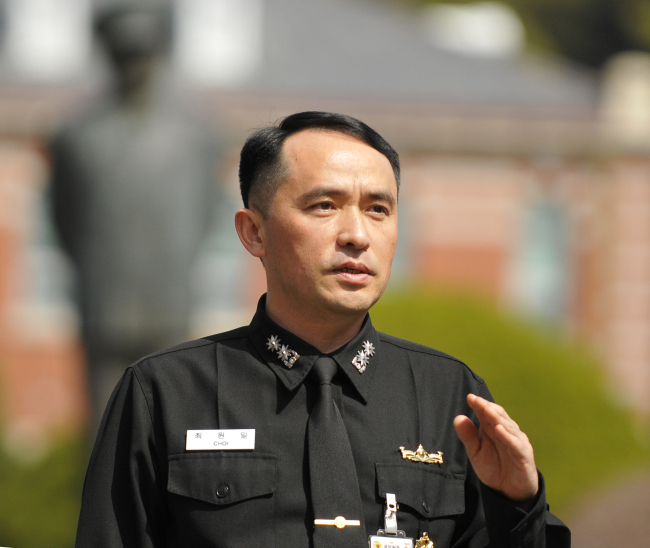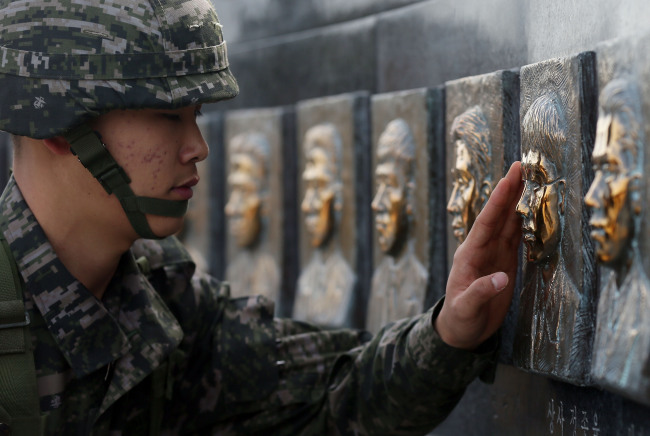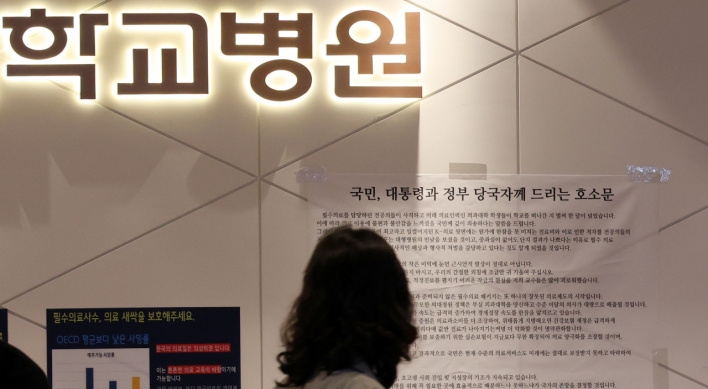Defense bolstered five years after Cheonan sinking
North Korea remains naval threat with continued saber-rattling
By Korea HeraldPublished : March 22, 2015 - 18:42
Five years after North Korea’s torpedo attack on the corvette Cheonan, the South Korean Navy has expressed full confidence in its enhanced capabilities to counter another provocation by the communist state and make up for the tragedy that killed 46 sailors.
The incident took place in the West Sea near the Northern Limit Line, a de facto sea border, at 9:22 p.m. on March 26, 2010. A South Korea-led multinational probe team has concluded that a midget submarine torpedoed the 1,200-ton patrol ship ― a conclusion that Pyongyang has denied.
Since the unprecedented attack, the South Korean Navy has bolstered its defense capabilities, including antisubmarine capabilities, with new equipment and changes in its operational strategies and tactics, and toughened personnel training.
The incident took place in the West Sea near the Northern Limit Line, a de facto sea border, at 9:22 p.m. on March 26, 2010. A South Korea-led multinational probe team has concluded that a midget submarine torpedoed the 1,200-ton patrol ship ― a conclusion that Pyongyang has denied.
Since the unprecedented attack, the South Korean Navy has bolstered its defense capabilities, including antisubmarine capabilities, with new equipment and changes in its operational strategies and tactics, and toughened personnel training.

“Since the attack on Cheonan, our naval staff has worked its fingers to the bone to bolster antisubmarine capabilities. Thus, our efforts have made great progress in terms of operational doctrines, tactics, education, training and reinforcements of our equipment,” said Cdr. Choi Won-il, who led the ill-fated Cheonan at the time of the attack.
“All naval forces including draftees and commanders are full of determination and resolve. We will fight and win if provoked again.”
Amid the South Korean Navy’s push to bolster operational capabilities, the North has also been sharpening its naval capabilities. It has been developing submarine-launched ballistic missiles and has continued to bolster coastal artillery forces. It has also held drills aimed at infiltrating South Korea’s border islands.
To counter Pyongyang’s persistent maritime threats, the South Korean Navy has launched a submarine force command in which it has incorporated its functions of underwater operations, training and education, and maintenance to conduct more integrated submarine operations.

The Navy has also been pushing to bolster its 13-submarine naval fleet, consisting of nine 1,200-ton 209-class submarines and four 1,800-ton 214-class submarines.
The Navy seeks to add five 214-class submarines by 2019 for a total of 18 submarines. In the 2020s, the Navy plans to add nine 3,000-ton submarines equipped with vertical launchers for submarine-to-ground missiles.
To secure longer-range strike capabilities, the Navy has installed ship-to-surface cruise missiles on its major destroyers and submarine-to-surface missiles on its 214-class submarines. Both missiles have a range of some 1,000 km.
The Navy has also established a naval intelligence analysis system that provides a three-dimensional map of underwater terrains to enable naval commanders to predict the enemy’s underwater infiltration routes.
To avert another torpedo attack, the Navy has installed torpedo acoustic countermeasure equipment on all of its corvettes and bigger warships.
When a warship equipped with the TACM system detects a torpedo, the system fires rounds into the sea up to 800 meters from the warship. The rounds then emit sounds louder than that of the ship in order to attract acoustic torpedoes away from the vessel.
Despite the modernization of naval forces, the North continues to pose a grave naval threat. The North has recently conducted maritime exercises including amphibious landing drills based on a scenario of “striking and occupying” South Korea’s border islands.
Last year, the North also held an amphibious landing exercise in which it designated guided missile bases on South Korea’s frontline islands as virtual targets. The bases on the islands are equipped with Israeli-made Spike missiles that are capable of launching precision strikes on the North’s coastal artillery hidden in mountain caves and tunnels.
South Korean officials also believe that the North has continuously built midget 130-ton Yeoneo-class submarines ― the same type the North used to attack the Cheonan. Pyongyang is known to have some 10 130-ton Yeoneo-class submarines, about 20 1,800-ton Romeo-class submarines and 40 300-ton Sangeo-class submarines.
By Song Sang-ho (sshluck@heraldcorp.com)
-
Articles by Korea Herald



![[Herald Interview] 'Amid aging population, Korea to invite more young professionals from overseas'](http://res.heraldm.com/phpwas/restmb_idxmake.php?idx=644&simg=/content/image/2024/04/24/20240424050844_0.jpg&u=20240424200058)















